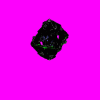Isn't there class Y - Demon Class.
I found another list of planet classes too. And examples of know planets of this class are in brackets
Class A - Gas Supergiant (An asteroid fragment with a diameter below 500km. Usually captured as moons of planets near an asteroid field. Phobos is an example. Also applies to all but the largest asteroids.)
Class B - Gas Giant (One is within an unspecified system tucked away in the corner of the Gamma Quadrant where two Jem'Hadar ships ambush a covert Karemma meeting with the Federation's U.S.S Defiant. Its thick atmosphere, with winds up to 10,000 kph, could dispel cloaks, jam torpedo guidance systems, and force phasers to be manually targeted. Another is a planet in the Badlands with at least one moon where Major Kira and Constable Odo's U.S.S. Mekong is lured by a Changeling Founder posing as a Maquis ship.)
Class C - Reducing (Have diameter between 500 and 1000km and are present deep within sun's cold zone. Composition is 60-75% ice and 25-40% rock. Ice typically coats the surface. Rhea and Dione are this class.)
Class D - Geo Plastic (Earth's moon Luna and the asteroid Ceres are this class.)
Class E - Geo-Metalic (Composition is 40-60% ice and 40-60% rock. Interior may be differentiated such that an ice layer is present beneath the crust. The Jovian moons Ganymede and Callisto are this class.)
Class F - Geo Crystaline (This is basically a class E moon with an atmosphere that is thick enough to retain sufficient heat for liquids to be present at the surface. The liquids are generally organic in nature rather than being water. Saturn's moon Titan is a perfect example.)
Class G - Desert (Moon orbiting within sun's cold zone. Heated by tidal interactions rather than internal radioactivity or compression. Lower parts of icy crust are melted to create a layer of liquid water which may extend to the surface. Thin oxygen atmosphere may also exist. Europa is an ice capped member of this class.)
Class H - Geo-Thermal (Mass is approximately that of Earth and orbits in habitable zone. Water is not found on surface, but may be found underground. Oxygen in atmosphere comes from ionization and breakup of water/ice rather than photosynthesis. Far more inhospitable than Vulcan.)
Class I - Asteroid/Moon (Orbit within sun's cold zone with a mass of 10 to 50 Earths. No solid surface exists beneath its atmosphere of hydrogen, helium, and methane. May have rings and a number of moons. Uranus and Neptune are this class.)
Class J - Geo-Morteus (Orbits in sun's cold zone with a mass of 50 to 4000 Earths. The atmosphere is mostly hydrogen with some helium and methane. A metallic hydrogen core exists at the center. A veil of liquid water may exist at a certain depth within the atmosphere. Planets often have rings at some point and many moons. Jupiter and Saturn fall within this class.)
Class K - Adaptable (Usually 1/10 Earth's mass and orbits within the habitable zone. Water ice is confined to polar and subsurface ice. The atmosphere is thin (CO2, H2O) and temperatures average -50C. Within the Sol system, Mars is this class.)
Class L - Geo-Inactive (More massive than class K (near that of Earth) and orbiting just within its sun's habitable zone. The atmosphere is oxygen and argon, and temperatures average -25 to 0C. Most of the water is locked up in far reaching polar ice and glaciers.)
Class M - Terrestrial (Classification for a planet with a nitrogen-hydrogen atmosphere. Class-M planets provide comfortable living conditions for a longer time, and the are suited for permanent accomodation of humanoids.)
Class N - Pelagic (A class M like world where water covers over 95% of the surface. The temperature is usually slightly warmer than with class M and the polar ice caps are seasonal and very small.)
Class S - Near Star (Has mass 1/10 to that of Earth and orbits in sun's cold zone. Lower portions of surface ice may be melted by heat from radioactivity or tidal interactions from multiple moons.)
Class T - Gas Ultragiant (Has mass between Earth's to 1/100 that of Earth. Orbits as moon or separate planet in any of sun's zones. Planet is geologically active due to internal heating or tidal flexing. Any atmosphere present contains sulfur compounds. Jupiter's moon Io is this class.)
Class Y - Demon (Near mass of Earth and within hot zone. Extreme case of class Q with temperatures over 800C, metallic pools on surface, and emits thermionic charges. Can pose a menace to navigation.)
Some of these don't make all that much sense...and there is obviously more info here then we need. Maybe a more simiplified list would be:
Class A - Gas Supergiant (Asteroid)
Class B - Gas Giant
Class C - Reducing (Ice Planet)
Class D - Geo Plastic (Lunar?)
Class G - Desert
Class J - Geo-Morteus (Gas Planets?)
Class K - Adaptable
Class L - Geo-Inactive (Frozen Planet)
Class M - Terrestrial
Class N - Pelagic (Ocean Planet)
Class Y - Demon
Although even with this list..I always thought L was a Jungle planet?







